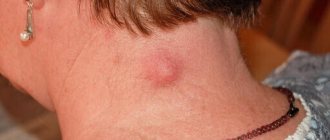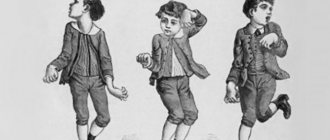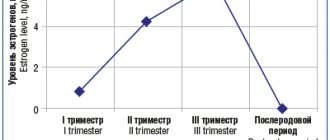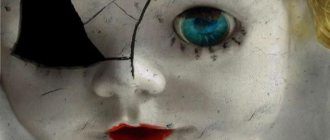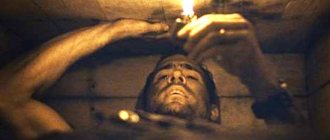.
There are more than 900,000 known species of insects on earth, but the most resilient of these creatures of nature is the cockroach. Many millions of years ago, a small insect appeared that survived the era of dinosaurs, the Ice Age and still lives side by side with humans, causing great inconvenience both in everyday life and psychologically. There are people who are terrified of these “creatures.” What is the name of the phobia, is it possible to fight it alone?
Blattophobia - fear of cockroaches
Brief description of the phobia
Many of us dream of these nasty insects disappearing from the face of the Earth. They are associated with unsanitary conditions and infections. But there is a category of people for whom these insects cause not just disgust, but panic fear. They understand that their excessive worry is unfounded, but they cannot do anything about it.
Fear of cockroaches is a phobia that greatly interferes with a person’s life. Officially it is called blattophobia.
According to research by the International University of Psychology in Berlin, every tenth inhabitant of the planet suffers from this phobia, and this fear comes from childhood. In most cases, it occurs as a result of psychological trauma.
The cause of injury can be various factors. In childhood, ideas about the beautiful and the terrible are formed in our subconscious, and cockroaches clearly do not fall into the first category. Children's consciousness is influenced by the example of parents who mercilessly hit a small insect with a slipper and scream heart-rendingly. Cinema also strengthens this idea by making horror films in which the red cockroach plays the “main roles”.
Women are more likely to be afraid of cockroaches
Also, people with increased nervous excitability, when faced with cockroaches, experience an enormous stressful situation, which in the future can provoke the appearance of a phobia of cockroaches. Women are at risk. The fact is that tactile sensations are important for women, and bodily contact with a dangerous insect causes them a feeling of disgust, which can degenerate into an obsessive fear of cockroaches.
Reasons for the development of fear
Most often, cockroaches become a phobia after experiencing stress. This applies to a greater extent to children who are overly sensitive to the world around them. A child can observe his parents’ negative reaction to insects, subsequently copying their behavior. However, other situations are common when blattophobia develops regardless of the environment:
- The influence of literary works: as surprising as it may be, sometimes children's fairy tales can provoke in children the most terrible and beyond their control fears. A striking example of this is Chukovsky’s work entitled “Cockroach”, where the insect is presented in the image of a terrifying hero. Alas, reading it can form a certain image in the child’s head, most likely far from reality.
- Horror films, or rather films about killer insects. As a rule, in them even the smallest and most harmless insects are exaggerated and presented in the form of huge monsters that destroy everything in their path. After this, domestic cockroaches seem no less dangerous creatures.
- Infections: Indoor cockroaches are known to be carriers of various infections. This really scares some people. They are afraid of becoming infected with something and try in any way to avoid meeting these insects.
- A repulsive appearance is the most common reason that leads to the development of a phobia. Most often, women, who are naturally more impressionable than men, complain about this factor.
Symptoms of blattophobia
First of all, for a person suffering from blattophobia, a cockroach is not just an insect, but a creature that provokes panic. At his very appearance, the heartbeat quickens, the head becomes dizzy, the legs become weak, and the whole body is paralyzed by wild fear. A characteristic sign is slight trembling throughout the body. In the most difficult cases, patients experienced attacks of hysteria and suffocation, loss of consciousness, and occasionally paralysis from horror. It is impossible to fully describe the symptoms. Each person reacts individually, and none of the manifestations of fear can be controlled. Experts note that almost all victims of this phobia understand the irrationality of their fear, but cannot cope with their emotions. Sometimes you don’t even need to see black domestic cockroaches or their red counterparts in person. It’s enough to see them on TV and the experience will once again cause the blattophobe a lot of distress.
Symptoms of the disease
The most common symptoms are the following; they can appear individually or as a group:
- inappropriate actions and behavior (squealing, waving arms, etc.);
- an irresistible desire to avoid contact with insects;
- asthma attacks, heart attacks;
- uncontrollable sobs, hysterics (the person understands the absurdity of his behavior);
- lightheadedness or fainting;
- trembling in the body;
- nausea, sweating;
- throat spasm;
- stupor;
- panic.
Panic is a common occurrence when you see a cockroach.
Symptomatic manifestations
You can say that a person has blattophobia if the following symptoms appear:
- Panic attacks. The person who saw the insect begins to become hysterical. His brain stops adequately assessing the situation. For example, a woman may scream loudly or jump onto a chair or other elevated surface.
- Unpredictable actions. A person with blattophobia understands perfectly well that at the moment of meeting a cockroach his actions are inadequate, but he cannot do anything about it. With his actions, he can shock his surroundings if people are accustomed to seeing the blattophobe as a reasonable person. Patients with this phobia constantly purchase various poisons to treat their apartment, even if there were no cockroaches at home.
- Pathological feeling of fear. The appearance of a blattophobe gives him away when insects appear: he begins to tremble in his knees, sweat profusely, stutter, and he suddenly turns pale.
- Excessive feeling of disgust. Moreover, it may not appear at the sight of all unsightly insects or animals.
All of the above-mentioned manifestations of fear of cockroaches, like other phobias, prevent the patient from living a full life.
Methods for dealing with phobias
Taking your fear of cockroaches for granted is not a solution to the problem, but a self-defeating escape attempt. Fear destroys a person's life, and it takes a lot of effort to become the master of your fear, and not remain a prisoner. Accept the problem, understand it and start fighting using an integrated approach. Cockroach phobia can be treated using psychotherapy or medication.
Drug treatment
Medicines are prescribed exclusively by a doctor. Self-treatment can lead to serious consequences.
The list of medications below is for informational purposes only.
- Tricyclic antidepressants (Fluoxetine, Sertraline).
- Weak tranquilizers (Phenazepam, Imipramine). They must be used directly during panic attacks.
- Tablets that block the feeling of increased anxiety during an encounter with an insect. These include Buspirone.
But medications can only help temporarily, directly during a panic attack, when the patient needs to be calmed down by giving a soothing decoction or pills.
Medicines must be taken as prescribed
Other methods to get rid of the problem
The main assistance in the fight against blattophobia can be provided by qualified psychotherapists or psychiatrists. They will teach you how not to succumb to phobias and reduce the negative impact of stress on the body. Treatment for each individual is selected individually, as it depends on many factors.
- Hypnosis is a state in which suggestibility increases and the absence of fear of a phobia is imprinted in the subconscious. Not all patients will agree to this method of treatment, all because of the same fear, but all phobias can be treated with hypnosis. The doctor puts the patient into a trance and, asking him leading questions, determines the true cause of fear.
Hypnosis against phobias
- The method of autogenic training consists in mastering the technique of self-hypnosis, in which a feeling of heaviness arises in the body, as a result of which a state of muscle relaxation is achieved, the so-called. relaxation. To do this, you need to turn on calm music, relax, even out your breathing, turn off your emotions, close your eyes and start saying self-hypnosis phrases: “I am brave.” I easily overcome my fear”, “I know that my fear is created by me, which means I can overcome it”, “I turn off my fear of (cockroaches) for the whole day.”
- The practice of yoga is a good helper in the fight against phobias. Regular yoga classes provide an outlet for our fears, gradually eliminating the level of anxiety.
- One of the effective techniques in struggle is to face your fear. By overcoming yourself, you will overcome your phobia. The exit should not be rapid, but gradual.
- Playing sports in the fresh air is a cure for many diseases, including blattophobia.
Progression and consequences
It is vital to treat this problem, because regular panic attacks reduce life expectancy and activate the aging process. The level of concentration and stamina decreases, and emotional instability is observed. Nyctophobia has a destructive effect on many areas of life. It is associated with eating disorders (possible development of bulimia and anorexia), the use of alcohol and drugs as one of the options for relaxation.
Worldwide studies have linked the presence of fears and other various factors in adults as an important reason for early death. It was also noted that patients who died early from cardiovascular diseases suffered from phobia. In addition, it was concluded that severe overexertion, which leads to fear of the dark, gives rise to many diseases that are in remission. All this leads to the fact that untimely treatment is very life-threatening. Don't put off visiting the doctors. A timely consultation with a specialist at an appointment in a specialized center is half the way to getting rid of the disease.
Alternative medicine for treating insect fear
As a sedative for neurasthenic conditions, tincture of peony, motherwort, and hawthorn is used, 25-35 drops 3 times a day, the course of treatment is a month. For general calming of the nervous system, take fresh motherwort herb juice 30-40 drops 3-4 times a day 30 minutes before meals. For neurasthenic conditions, you can also use the following decoction: pour 1 tablespoon of peppermint leaf into 1.5 cups of hot water, cook for 15 minutes over low heat, take 0.5 cup three times a day.
The main thing is to promptly recognize the presence of a problem, do not delay treatment and visit a specialist who will definitely be able to help you overcome your fears.
Blatophobia - what is it?
Blattophobia is the fear of cockroaches. Insectophobia is the general name for the fear of insects. There is an opinion that it is more characteristic of women, but in fact, the phobia occurs with equal frequency among both sexes.
On the one hand, a negative attitude towards cockroaches is justified. They carry diseases, spoil things and stain food, create unsanitary conditions, and are a source of allergies. Pests must be controlled for health reasons. But this needs to be done rationally, and not in a fit of panic, burn your own house or poison insects, yourself and your neighbors.
This is interesting! During the reign of Peter I, cockroaches were considered an indicator of the well-being of a home. It never occurred to anyone to fight them. But Peter himself was afraid of cockroach-like insects.
Manifestations and signs of blattophobia
The symptoms of the disease appear the same and do not depend on the cause of its occurrence. The very first manifestation is panic at the sight of an insect. If a person, seeing a cockroach, jumps up, runs away, waves his arms, screams, or vice versa, cries, falls into a stupor, we can immediately say that he suffers from blattophobia.
Characteristic manifestations also include:
- Vegetative signs. Fear can cause trembling, nausea, dizziness, suffocation, sweating, loss of consciousness and even tachycardia.
- Obsessive thoughts. The penetration of an insect into the ear, nose, touching it to the body, contamination of food, infection with some kind of disease - these and many other thoughts can deprive a fearful person of sleep.
- Irrational actions. The desire to get rid of insects by any means, frequent washing of tables, work surfaces and cabinets in the kitchen, floors, hand washing, constant disinfestation of your home.
Important ! Experts say that all manifestations of cockroach phobia are individual. But the most important thing is that not a single person suffering from blattophobia is able to cope with their fear. Moreover, not only live insects, but also their images in a picture or on TV can cause panic or other manifestations of the disease.
Serious form of disorder
If you can’t cope with the problem on your own, psychotherapy will be the only reasonable way out of the situation. An experienced psychologist uses the following treatment methods:
- hypnotherapy or programming of human consciousness. During a hypnosis session, work with the subconscious occurs, aimed at completely getting rid of fear;
- neuro-linguistic therapy. In collaboration with a specialist, the patient realizes the destructiveness of his own reaction and reprograms himself to behave normally when he sees a cockroach;
- cognitive therapy. During sessions, an experienced doctor exposes the patient to indirect exposure to insects and teaches them to cope with fear independently.
At the end of treatment, any of the patients can be completely calm near the cockroach and live a full life as a healthy person.
Previous post Mosquito trap: proven options for home and apartment
Next entry Do-it-yourself ant farm made of plaster, plywood or wood
Manifestations of fear of cockroaches in humans
Symptoms of Blatophobia vary from person to person, depending on their personality characteristics and state of mind. Additionally, patients with cockroach phobia may have any number of triggers, from actual live cockroaches to a simple photograph. The severity of symptoms depends on the person's level of fear.
Typically, symptoms of Blattophobia include an extreme fear of cockroaches and simply a feeling of discomfort or anxiety when exposed to cockroaches or any environment in which they may live.
If the level of fear is high enough, exposure may cause a panic attack. Panic attacks are heightened levels of fear and anxiety during which a person experiences a variety of physical symptoms. These symptoms include rapid heartbeat, difficulty breathing, weakness, fainting, dizziness, tingling or numbness in the arms, extreme feelings of dread, loss of control, and chest pain.
